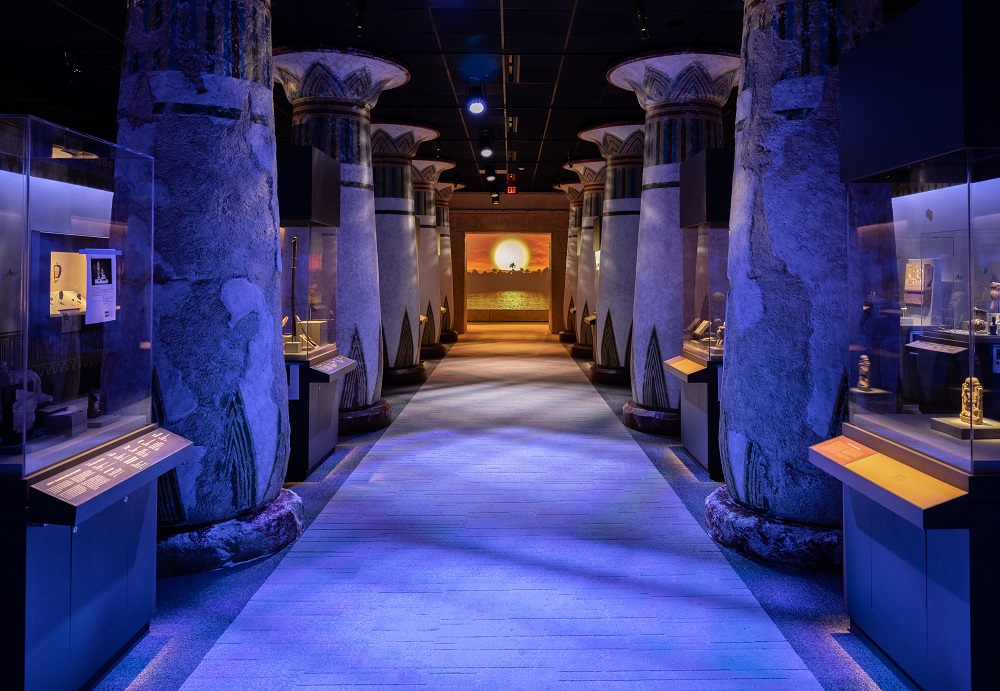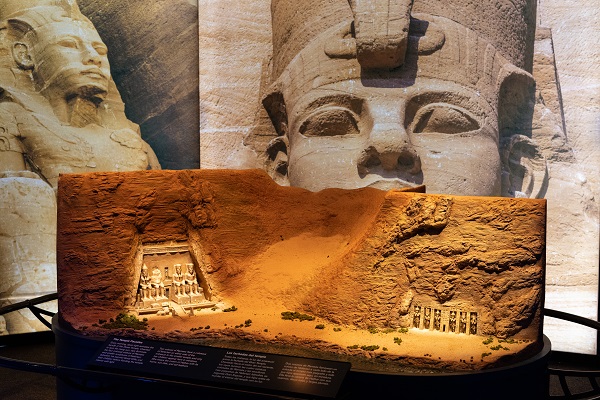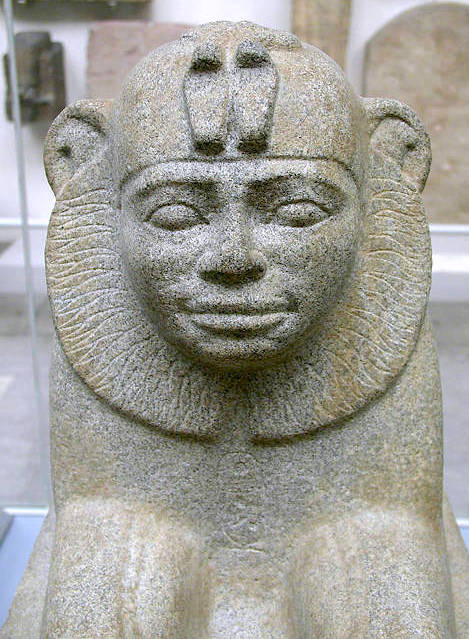Ancient Egyptian artists adhered to strict rules when producing works of art. The human form was depicted with the head in profile, eye drawn in full, torso forward-facing, and legs in profile — one foot in front of the other. This style, known as frontalism, gave the figures a sense of formality. Whether standing or sitting, the subjects appear rigid in pose: gaze set, body stiff.
Red lines represent the system used in the Old Kingdom. The addition of the white graph is indicative of the system used from the Middle Kingdom to the Late Period
Proportions were kept consistent through the use of grids and lines. The earliest examples from the Old Kingdom employed a simple system of horizontal guidelines with one vertical line bisecting the figure though the ear. Beginning with the Middle Kingdom up to the Late Period, a grid of 18 squares was used to reproduce standing figures and to allow the picture to be enlarged or made smaller while ensuring that the proportionality of the figure’s anatomy remained intact.
Paintings were most likely planned on papyrus paper and later transferred to tomb walls by an artisan using the grid system as an aid.
Try your hand at using the grid system to copy an ancient Egyptian work of art! All you need is a copy of the blank grid, a copy of the tomb painting on the grid, and a pencil.
HMNS at Home is presented by Mitsubishi Corporation









